Tyra Douyon - March 22, 2023

In 2023, it is safe to say that most people fall into one of three categories regarding their mobile devices: those who are unintentionally addicted, those who are actively attempting to conquer their addiction or those who refuse to acknowledge the extent of their screen time. Think about it: we charge our phones right next to our beds at night, we bring them to the dinner table or when we’re out with friends, and some of us even scroll while we’re in the bathroom.
The concept of constant connectivity and an insatiable thirst for information is a relatively new phenomenon that has gained prominence in the 21st century, largely attributed to the rise of social media. While we repost memes and lose track of time during a Tik Tok watching binge, we are also subjecting ourselves to an overwhelming barrage of advertisements, potentially encountering thousands of them each day.
In 2007, Yankelovich, a market research firm, approximated that an average consumer encountered up to 5,000 advertisements per day. Fast forward to today, and studies suggest that an average person is now exposed to a staggering 6,000 to 10,000 ads daily. Additionally, many of these advertisements employ targeted marketing strategies to personalize their content based on user’s preferences and previously searched web pages, which can have negative consequences if not approached with caution. The constant barrage of persuasion to purchase, subscribe, or sign up makes it nearly impossible to avoid being trapped by these tactics at least a few times each week.
Nevertheless, those responsible for the advertising industry’s growth are ecstatic about the increased visibility. But who are the driving forces behind modern marketing strategies and how do demographic factors influence the development of advertisements and target audiences?

Since 2019, the Alliance for Inclusive and Multicultural Marketing (AIMM) and the Association of National Advertisers (ANA) has collaborated to monitor the expansion of marketing professionals, brands, and businesses in the field, with the goal of advancing multicultural and inclusive marketing to foster business growth in a diverse marketplace. According to their research, women currently constitute nearly 70% of advertising professionals and comprise over 50% of senior-level executives.
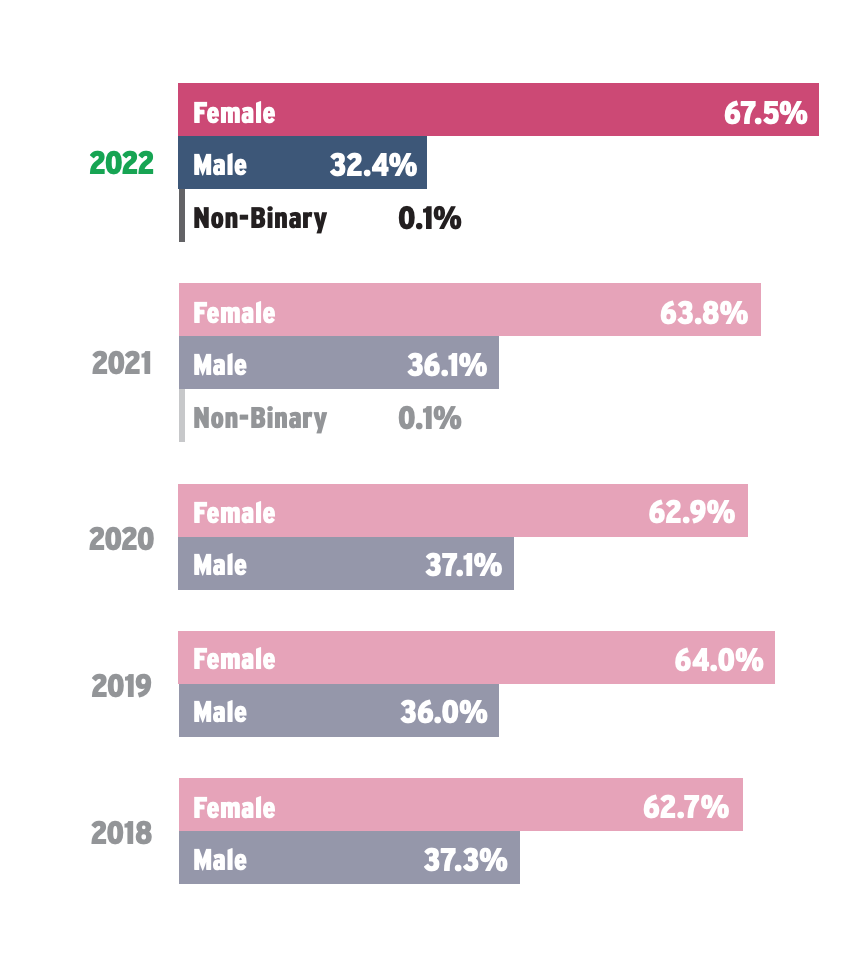
Source: AIMM and ANA 2022 Diversity Report
Note: “Eighty-one companies completed the diversity benchmark — 19 ANA board member companies and 62 other ANA member companies, representing 19,966 marketers in total. There were participants with over 1,000 marketers as well as participants with under 10 marketers.”
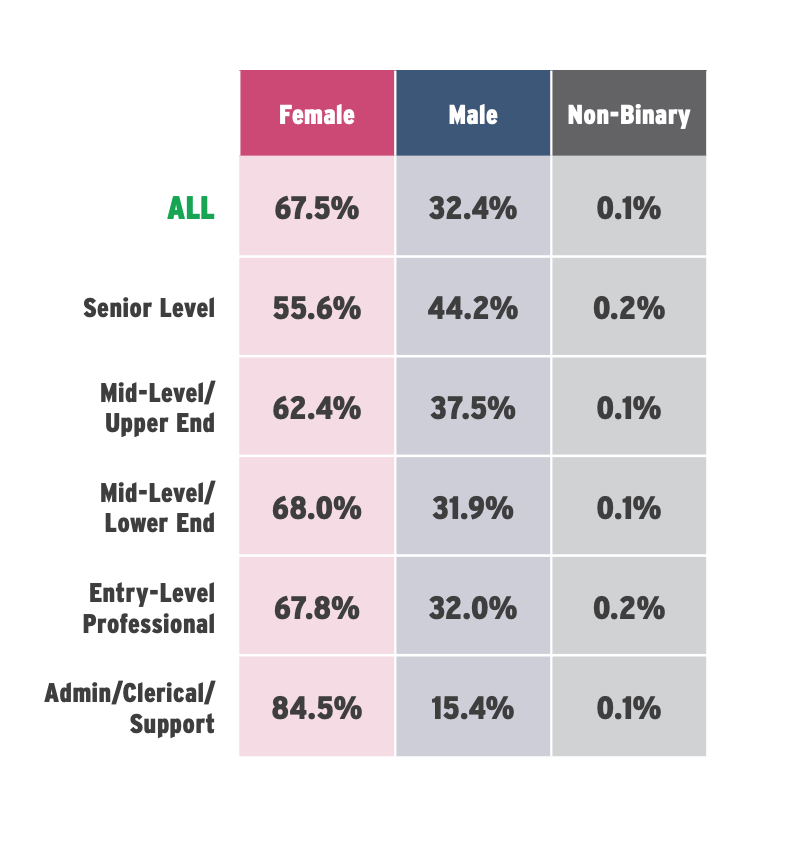
Source: AIMM and ANA 2022 Diversity Report
The strides made since the surge in the labor force, which began in America during the 1960s and led to a gradual increase in opportunities for women and people of color in the workforce, are apparent today. Women now hold more leadership positions than men as creative executives and earn high salaries in the industry, showcasing significant progress.
Notably, with regard to intersectionality, the research highlights more diversity than ever before, standing at 32.3 percent. However, despite this progress, the research underscores the need for more representation and inclusivity in the industry at the senior level.
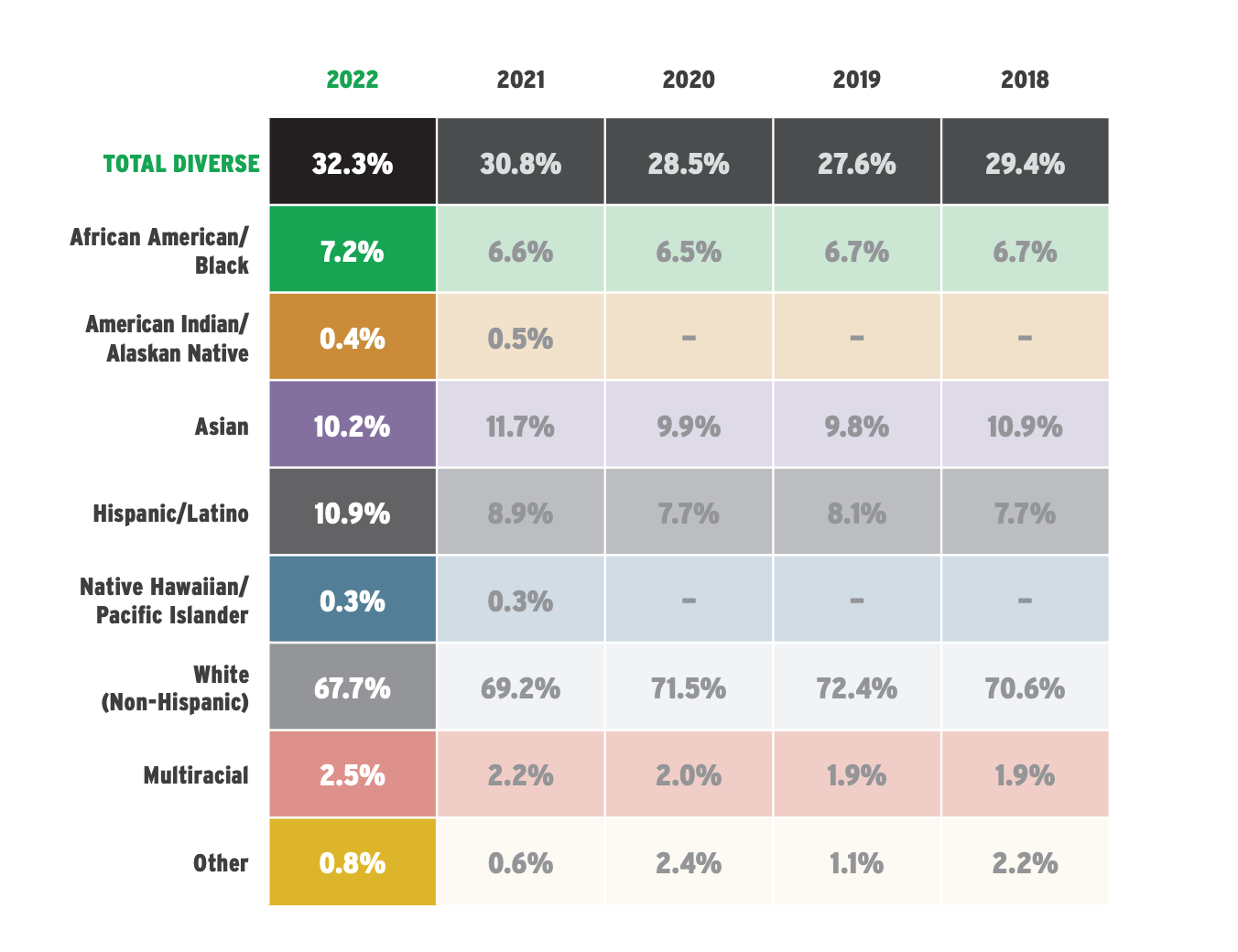
Source: AIMM and ANA 2022 Diversity Report
While the advertising industry’s workforce comprises 7.2% African American/Black women, 10.9% Hispanic/Latino women, and 10.2% Asian women, the representation of these groups remains significantly lower than their respective populations in the United States (12.1% and 18.7% for African American/Black and Hispanic/Latino, respectively). But although Asian women’s representation declined in 2022, their proportion is still significantly higher than their population in the U.S., which is 5.9%.
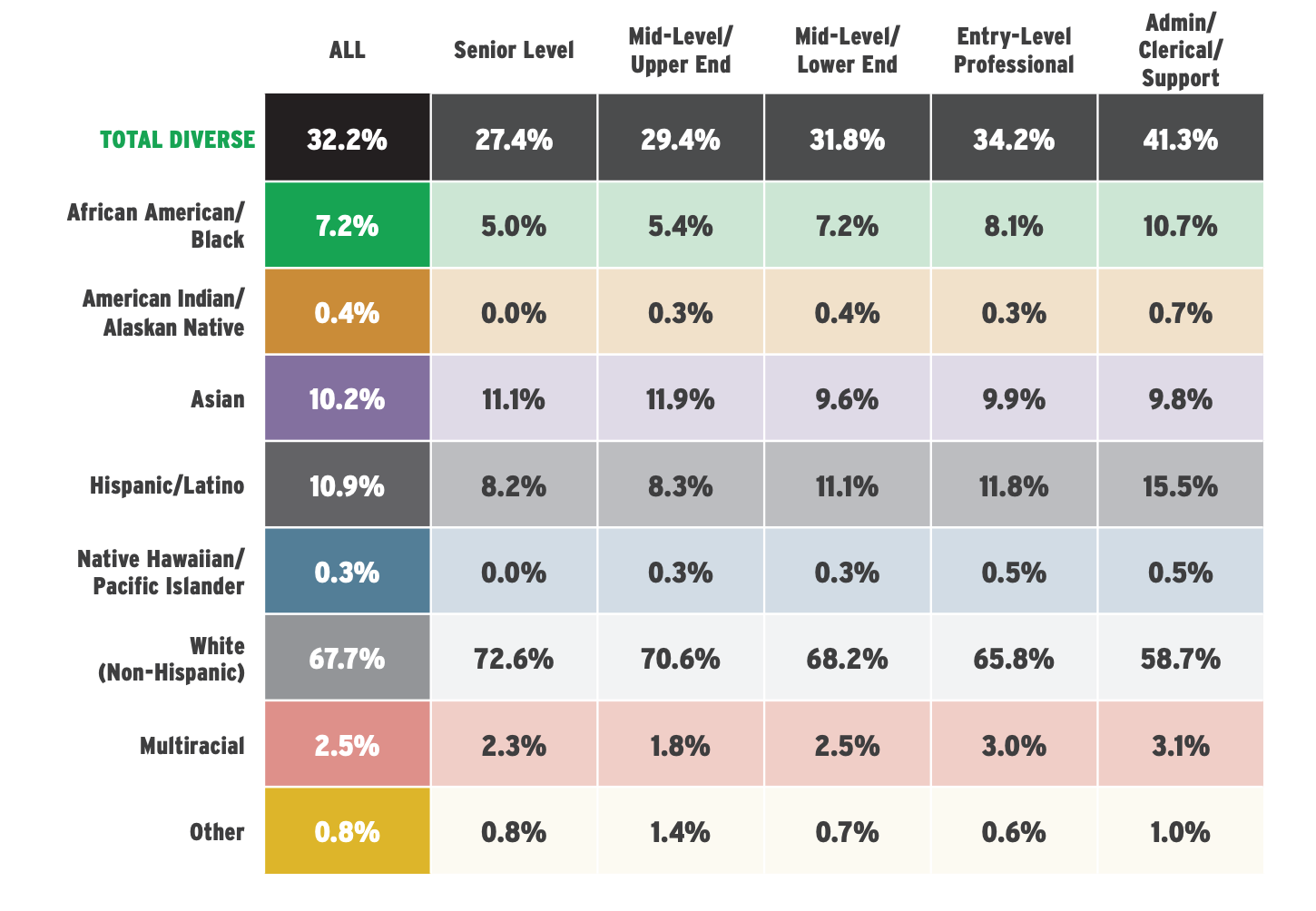
Source: AIMM and ANA 2022 Diversity Report
Additionally, regarding ethnicity distribution across job levels, the admin/clerical support level is the most diverse while the senior level is the least diverse. As for the “professional” levels, the entry-level displays the most diversity. Overall, the evolution of women in advertising reflects broader social changes and progress in gender equality, but there is still room for improvement.
Although there has been progress in terms of gender representation (albeit with discrepancies in diverse populations), women in advertising face another challenge. In the 1980s, 52% of women participated in the labor force. However, women were depicted in workplace settings in only 4% of commercials. The current advertising statistics are alarming, with the NY Times reporting a significant increase in the portrayal of women in domestic or family settings, accounting for 66% of the 10,000 ads analyzed in 2022, compared to 32% in 2021. Conversely, the percentage of women depicted in professional settings declined from 16% in 2021 to a mere 7% in 2022.
These shifts have been partially attributed to the changing landscape of women in the workforce during the Covid-19 pandemic when roughly 2 million women resigned from their jobs to stay home and tend to their families (NPR). The Center for American Progress (CAP) also found that women lost approximately 5.4 million jobs during the recession—nearly 1 million more job losses than men putting a higher percentage of women in domestic settings for the first time or returning to it. Comparatively, Marketing Dive found that “in 2022, men were cast in professional roles 73% more often than women compared to the previous year and 30% more often in leadership roles.
Due to a sequence of focused fiscal interventions by policymakers, such as the American Rescue Plan, the U.S. economy bounced back in an unprecedented manner from the COVID-19 recession, returning to pre-pandemic levels by August 2022. Notably, CAP also reported that women’s employment has recuperated to pre-pandemic levels, so consequently, advertisements should also reflect this trend.
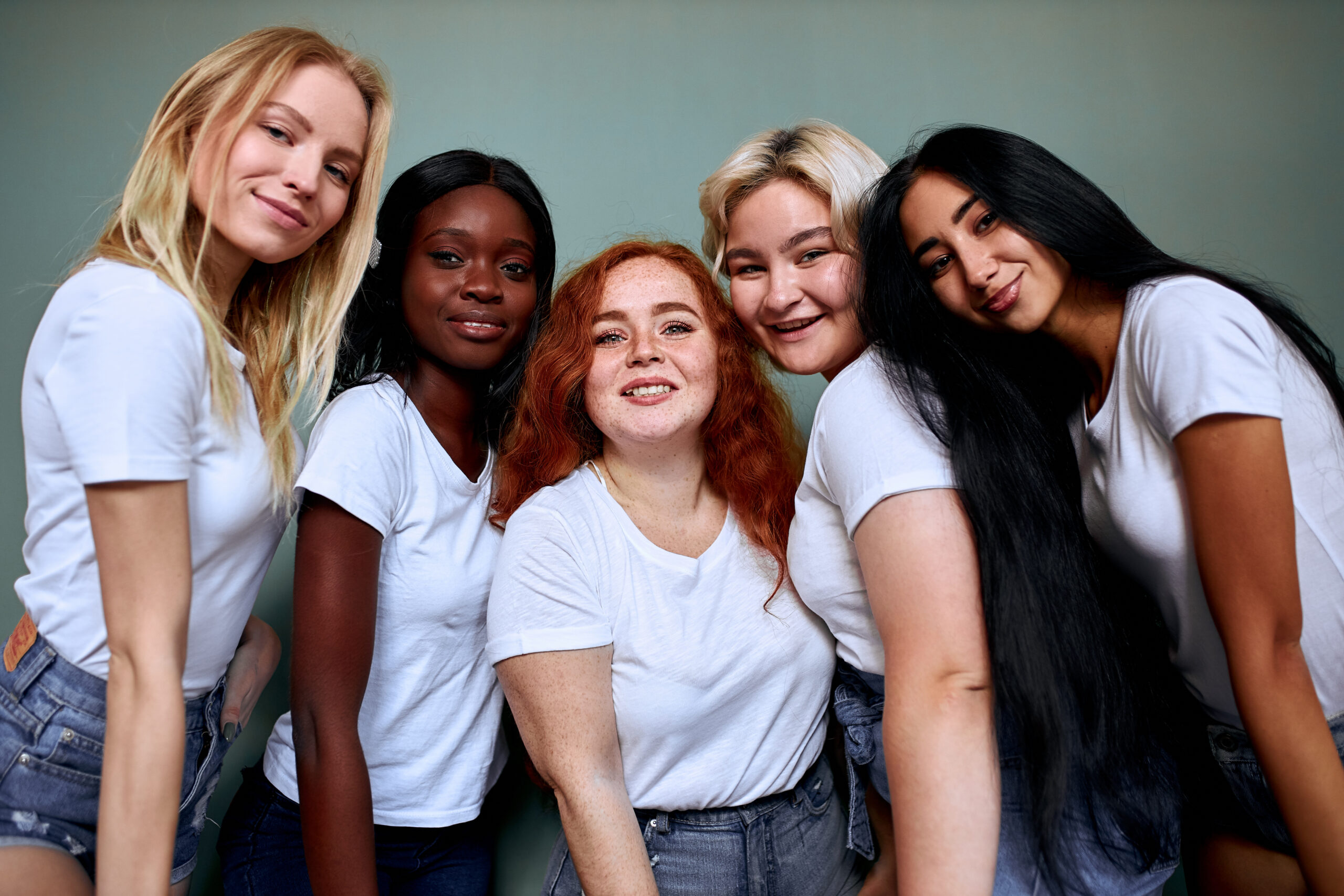
The depiction of women in advertising has evolved over time, wherein the 50s and 60s primarily portrayed women as homemakers and caretakers of the family, while the 70s and 80s often depicted them as either sexual objects or unrealistic representations of perfection. As the advertising industry continues to make strides toward hiring and embracing more women, including women of color, advisors need to invest in firms that accept and value decisions from women in creative positions and prove they can match ad creativity to their business marketing objective. Ad firms that are unwilling or hesitant to update their marketing tactics and campaigns to reflect modern culture will be replaced by advertising firms that aren’t afraid to push the boundary while also effectively communicating their product or service to their audiences and generating revenue.
Contemporary examples provide additional evidence. The popular lingerie brand Victoria’s Secret lost its economic advantage and market share against its competitor, Aerie, because despite a major shift in societal preferences, continued to use outdated marketing campaigns that primarily appeal to men, to sell products to women. Moreover, their iconic fashion show was also discontinued in 2018, when another competing lingerie brand Savage Fenty began to showcase more diverse models on its runways regarding size and skin color.
90% of girls reported comparing themselves to images in the media, so it is vital that brands and marketers take responsibility for representing women as multi-faceted individuals who make significant contributions to various fields. Girls and women need to witness a more authentic and optimistic portrayal of their aspirations to become exceptional professionals, especially in historically male-dominated industries. Moreover, it is also important for boys and men to see more ads that show women as individuals who are capable of accomplishing a multitude of personal and professional goals. These actions have an impact beyond just the advertising industry and the ads they promote; they also affect the potential positive effects we can have on our society and culture.